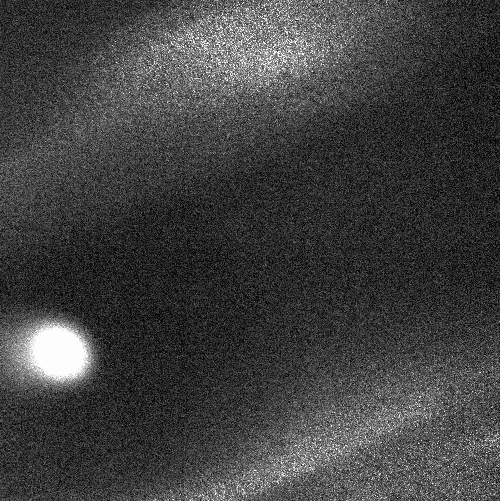Highlights
Good vibrations for trapped ions

Systems that trap individual ions can implement quantum computations and simulations. CQT researchers have proposed a novel protocol to create entangled states and perform cooling using phonon dynamics in such systems.
In Manas Mukherjee's laboratory at CQT they have only recently trapped their first cloud of ions, but they've already got ambitious plans for what to do with them. Manas and his collaborators have proposed a novel way to cool trapped ions and put them into an entangled state. Such states can form the starting point for quantum computations or simulations. The work was published in Physical Review Letters in October.
Trapped ions have been used in some of the most advanced demonstrations of quantum information processing to date, with as many as 14 ions entangled at once. Ions are also seen as a promising system for simulation, thanks to research showing that their vibrational modes (phonons) can mimic the widely applied 'Bose-Hubbard model'. This model is invoked to describe the properties of some types of quantum phase, such as Mott Insulator and superfluid states.
Researchers are keen to have a tunable system to simulate the properties of the Bose-Hubbard model, with the hope both of understanding better the behaviour of existing materials and for informing the design of new ones.
Manas and his co-authors Tarun Dutta, a CQT PhD student, and Krishnendu Sengupta at the Indian Association for the Cultivation of Science in Kolkata, India, looked in detail at the schemes proposed to implement Bose-Hubbard models in ion trap system. They realised that making phonons interact differently can be applied to other goals, too. The co-authors show that it is possible to set up an entangled state of phonons or concentrate all the phonons at one ion by using just one phase ramp of a laser. Because phonons in this system are effectively heat (in the form of vibrational energy), moving all the phonons to one ion is equivalent to cooling the rest. One could imagine computing schemes where one ion is sacrificed as a heat sink, protecting other ions that are involved in the calculation.

CQT PI Manas and his team trapped their first cloud of ions in their new experimental setup in November – seen in the picture as a fuzzy blob. This is a step towards trapping and controlling individual ions.
The approach could be relatively easy to implement. Setting up the phonon interactions involves one laser shining on one ion at a time – applying a potential over a finite ramp time – which requires less complicated apparatus than other approaches for creating entanglement or doing cooling. The technique can also be applied to ions that are difficult to cool by other methods, such as the Ba+ ions that Manas and his group are working with.
In an ion trap experiment, the ions are typically confined along a line using electric fields and held in a vacuum so that they have minimal interaction with the environment. They are cooled to near the zero point energy of the trap potential so that they remain almost perfectly still. (At room temperature, atoms are zipping around at speeds of a few hundred metres per second.)
Manas and his team began building their ion trap setup after Manas joined CQT as a Principal Investigator in 2012. In November, they trapped their first clouds of ions (pictured right). This is a first step towards having well-controlled string of particles to experiment on.
In the paper, Manas and his coauthors also calculate experimentally relevant parameters for creating entangled states and cooling in the Ba+ system they are implementing. Manas says the proposal is on the team's list of longer-term science goals.
For more details, see "Ramp Dynamics of Photons in an Ion Trap: Entanglement Generation and Cooling", Phys. Rev. Lett. 111, 170406 (2013); arXiv:1305.5555.






